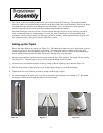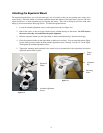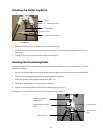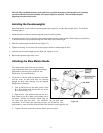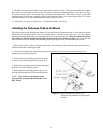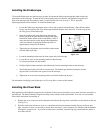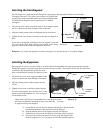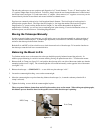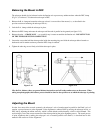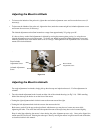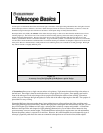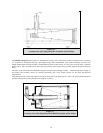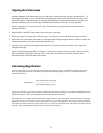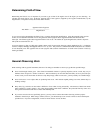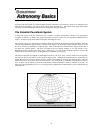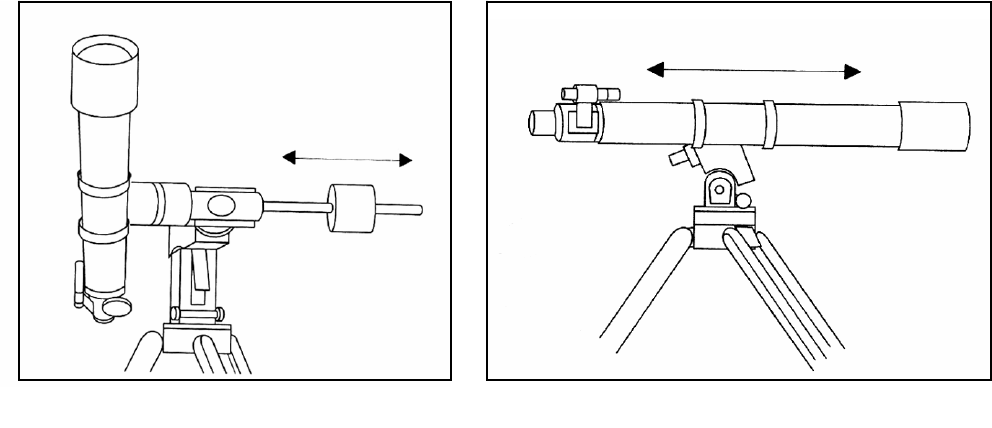
B
B
a
a
l
l
a
a
n
n
c
c
i
i
n
n
g
g
t
t
h
h
e
e
M
M
o
o
u
u
n
n
t
t
i
i
n
n
D
D
E
E
C
C
. amp and rotate the telescope so that it is on one side of the mount (i.e., as described in the
. Release the tube — GRADUALLY — to see which way it rotates around the declination axis. DO NOT LET GO
5.
6. .Tighten the tube ring screws firmly to hold the telescope in place.
Like the R.A. balance, these are general balance instructions and will reduce undue stress on the mount. When
e done for the specific area at which the telescope is pointing.
The telescope should also be balanced on the declination axis to prevent any sudden motions when the DEC clamp
(Fig 2-13) is released. To balance the telescope in DEC:
Release the R.A. cl
1
previous section on balancing the telescope in R.A.).
2. Lock the R.A. clamp to hold the telescope in place.
3. Release the DEC clamp and rotate the telescope until the tube is parallel to the ground (see figure 2-15).
4
OF THE TELESCOPE TUBE COMPLETELY!
Loosen the screws that hold the telescope tube inside the mounting rings and slide the telescope either forwards or
backwards until it remains stationary when the DEC clamp is released.
taking astrophotographs, this balance process should b
A
A
d
d
j
j
u
u
s
s
t
t
i
i
n
n
g
g
t
t
h
h
e
e
M
M
o
o
u
u
n
n
t
t
f
ved NOT by moving the telescope in R.A. or
e, and horizontally, which is called azimuth. This
g the polar alignment process. The actual process
of polar alignment, that is making the telescope’s axis of rotation parallel to the Earth’s, is described later in this
anual in the section on “Polar Alignment.”
In order for a motor drive to track accurately, the telescope’s axis of rotation must be parallel to the Earth’s axis o
rotation, a process known as polar alignment. Polar alignment is achie
DEC, but by adjusting the mount vertically, which is called altitud
section simply covers the correct movement of the telescope durin
m
Figure 2-15
Figure 2-14
16



